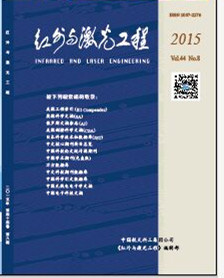Li Bin, Sang Jizhang, Ning Jinsheng. Analysis of accuracy in orbit predictions for space debris using semianalytic theory[J]. Infrared and Laser Engineering, 2015, 44(11): 3310-3316.
| Citation:
|
Li Bin, Sang Jizhang, Ning Jinsheng. Analysis of accuracy in orbit predictions for space debris using semianalytic theory[J]. Infrared and Laser Engineering, 2015, 44(11): 3310-3316.
|
Analysis of accuracy in orbit predictions for space debris using semianalytic theory
- 1.
School of Geodesy and Geomatics,Wuhan University,Wuhan 430079,China;
- 2.
Collaborative Innovation Center for Geospatial Technology,Wuhan 430079,China
- Received Date: 2015-03-05
- Rev Recd Date:
2015-04-10
- Publish Date:
2015-11-25
-
Abstract
For tens of thousands of Earth orbiting space debris, fast and accurate orbit determination and prediction information is essential for providing reliable collision warnings, and thus becomes an important subject in the space situational awareness(SSA). To overcome the problems of low computing efficiency using numerical integration methods and large orbit prediction errors with analytical theories, semianalytic satellite theory(SST) that could achieve the accuracy of numerical methods with the computing efficiency of analytic methods was developed. The semianalytic orbit integrator being developed using the multi-scale perturbation method at Wuhan University was discussed, together with its prediction performace. Orbits generated from the precise numerical integrator was used as the true orbit to compute the prediction error of the developed semianalytic integrator. Preliminary results show that, for space objects with Area-to-mass ratio 0.01 and orbit altitude 300 km, 2 km prediction accuracy for 1-day orbit prediction is achieved using the semianalytic orbit integrator, and the computation time was only 60 ms.For orbits higher than 1 000 km in altitude, the prediction errors were mostly less than 50 m, meeting the requirements for many space applications.
-
References
|
[1]
|
Liu Chunbo, Zhao Shaobo, Han Xiang'e. Detection of space debris of centimeters in size via spaceborne ladar[J]. Infrared and Laser Engineering, 2012, 41(5): 1244-1248.(in Chinese) |
|
[2]
|
O'Brien R, Sang J. Semianalytic satellite theory using the method of multiple scales[C]//AIAA paper 2004-4852, AIAA/AAS Astrodynamics Specialist Conference, 2004, 1:243-254. |
|
[3]
|
Liu J J F, Alford R L. Semianalytic theory for a close-Earth artificial satellite[J]. Journal of Guidance and Control, 1980, 3(4): 304-311. |
|
[4]
|
Danielson D A, Sagovac C P, Neta B, et al. Semianalytic Satellite Theory[M]. US: Naval Postgraduate School, Monterey, 1995: 93943. |
|
[5]
|
Bezděk A, D Vokrouhlick伥. Semianalytic theory of motion for close-Earth spherical satellites including drag and gravitational perturbations[J]. Planetary and Space Science, 2004, 52(14): 1233-1249. |
|
[6]
|
Nayfeh, A. Perturbation Methods[M]. New York: John Wiley Sons, 1977. |
|
[7]
|
Montenbruck O, Gill E. Satellite Orbits-Models, Methods, and Applications [M]. Berlin: Springer-Verlag, Heidelberg, 2000. |
|
[8]
|
Sang J, Bennett J, Smith C. Estimation of ballistic coefficients of low altitude debris objects from historical two line elements[J]. Advances in Space Research, 2013, 52:117-124. |
-
-
Proportional views

-









 DownLoad:
DownLoad: